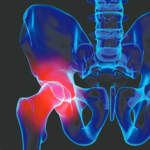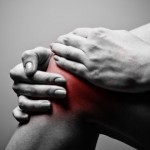Guideline authors discussed therapeutic options for patients with hand, knee and hip OA in a session at the 2019 ACR/ARP Annual Meeting.


Guideline authors discussed therapeutic options for patients with hand, knee and hip OA in a session at the 2019 ACR/ARP Annual Meeting.

A meta-analysis confirms prior research suggesting exercise therapy benefits patients with knee and hip osteoarthritis (OA). The study found greater improvements in pain, function, performance and quality of life in patients with milder, as opposed to more severe, OA…
The Underwater Biosimilars Coalition shared with the Centers for Medicare & Medicaid Services concerns about problems arising from the average sales price payment methodology and discussed potential options for addressing these challenges.

Marchand et al. sought to examine the relationship between alcohol consumption and hip osteoarthritis (OA) in women. By analyzing data from the Nurses’ Health Study cohort in the U.S., the researchers concluded that an association may be observed between higher alcohol consumption and greater incidence of total hip replacement due to OA.

The use of warfarin may increase the risk of knee or hip replacement in patients with osteoarthritis (OA), according to research presented during ACR Convergence 2020.

Larry Beresford |
Having completed her term as ARP president, Hazel L. Breland, PhD, OTR/L, FAOTA, CLA, has stepped into a new role as chair of the ARP’s Membership and Nominations Committee (https://www.rheumatology.org/Rheumatology-Professionals). Dr. Breland is associate professor of occupational therapy at the Medical University of South Carolina (MUSC), Charleston, where she teaches graduate students and serves as…
Funck-Brentano et al. hypothesized that causal associations for osteoarthritis (OA) may differ by site, and they undertook this study to identify causal risk factors of knee, hip and hand OA.

For patients with hip osteoarthritis (OA), pain management and maintaining function are primary therapy goals. Current guidelines offer recommendations on nonpharmacologic and pharmacologic approaches to addressing these issues in hip OA. For patients in whom pharmacologic management is considered, the use of intra-articular steroid injections is one option. In its 2012 guidelines (the most current…

Sharad Lakhanpal, MBBS, MD |
It is a great honor to serve you as the 80th president of the American College of Rheumatology (ACR). The ACR is a leader in the world of rheumatology. Therefore, with this privilege also comes enormous responsibility. A Brief History of the ACR The first efforts to study and control the rheumatic diseases in the…
Kathryn Doyle |
(Reuters Health)—Water- or land-based exercise should provide some short-term benefit in pain management for hip osteoarthritis, though there are few well-designed trials testing it, according to a new review. “It is nice to finally have some hip-specific data, as hip and knee osteoarthritis are often grouped together, and it’s almost certain that there are differences…